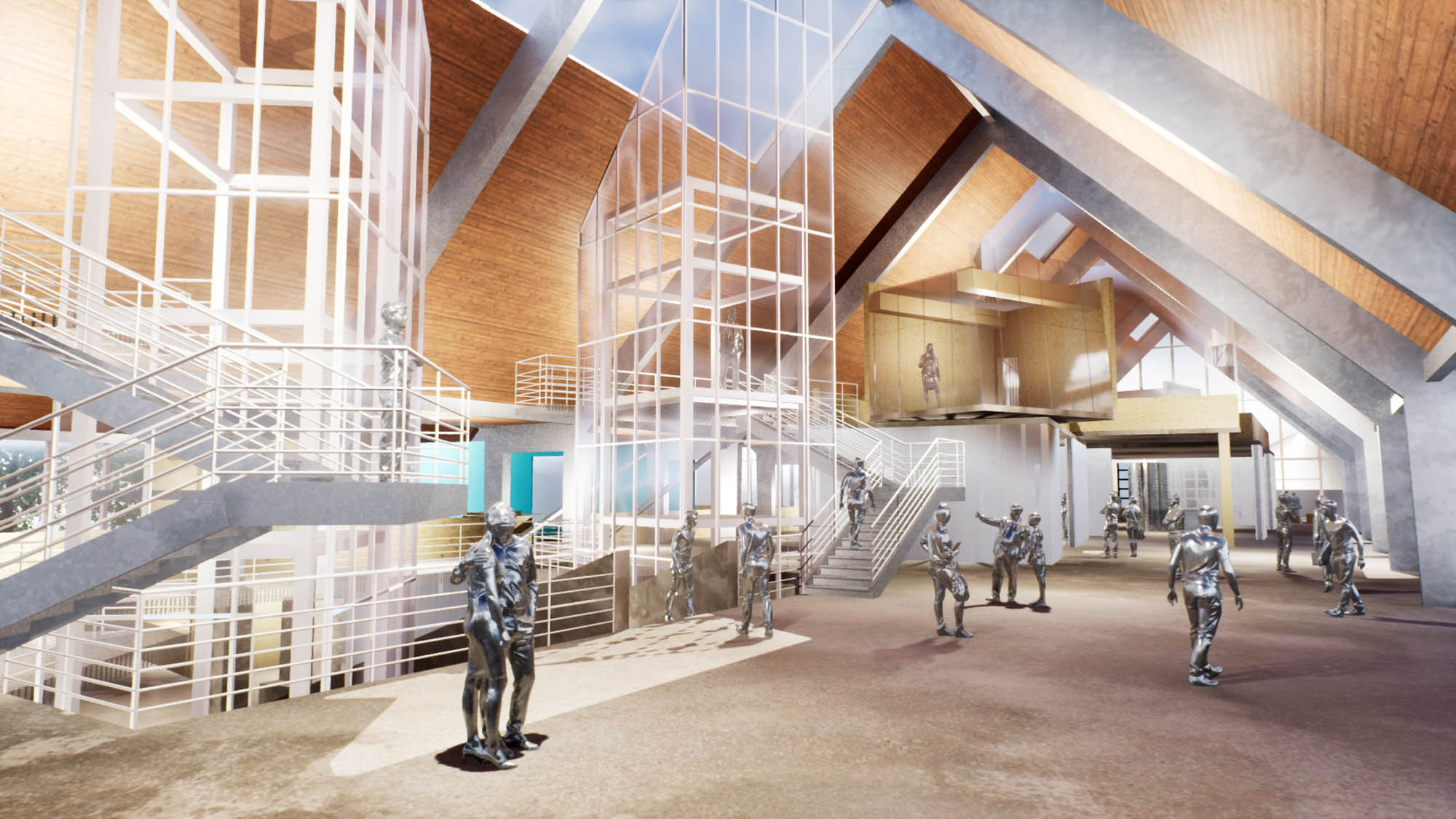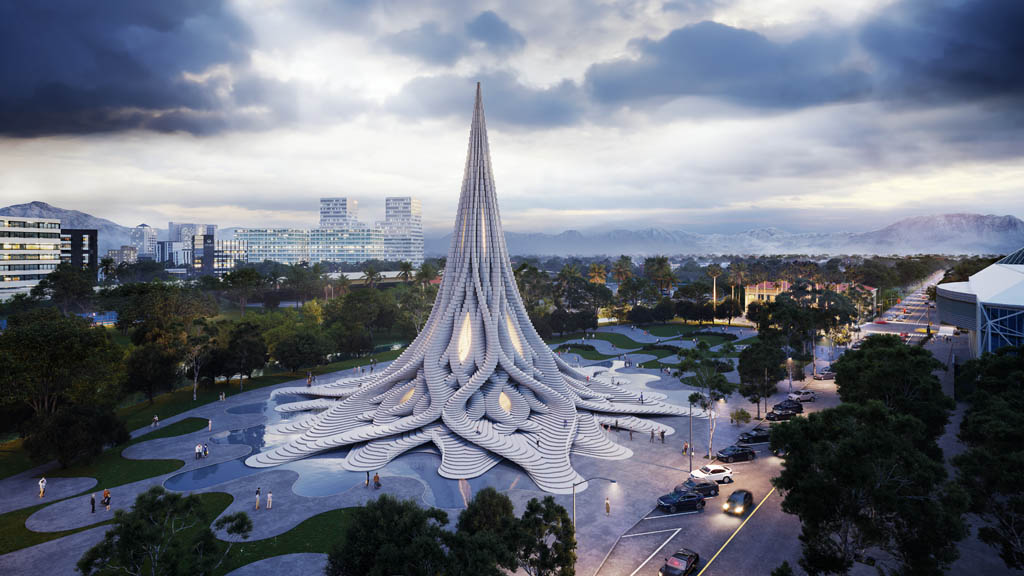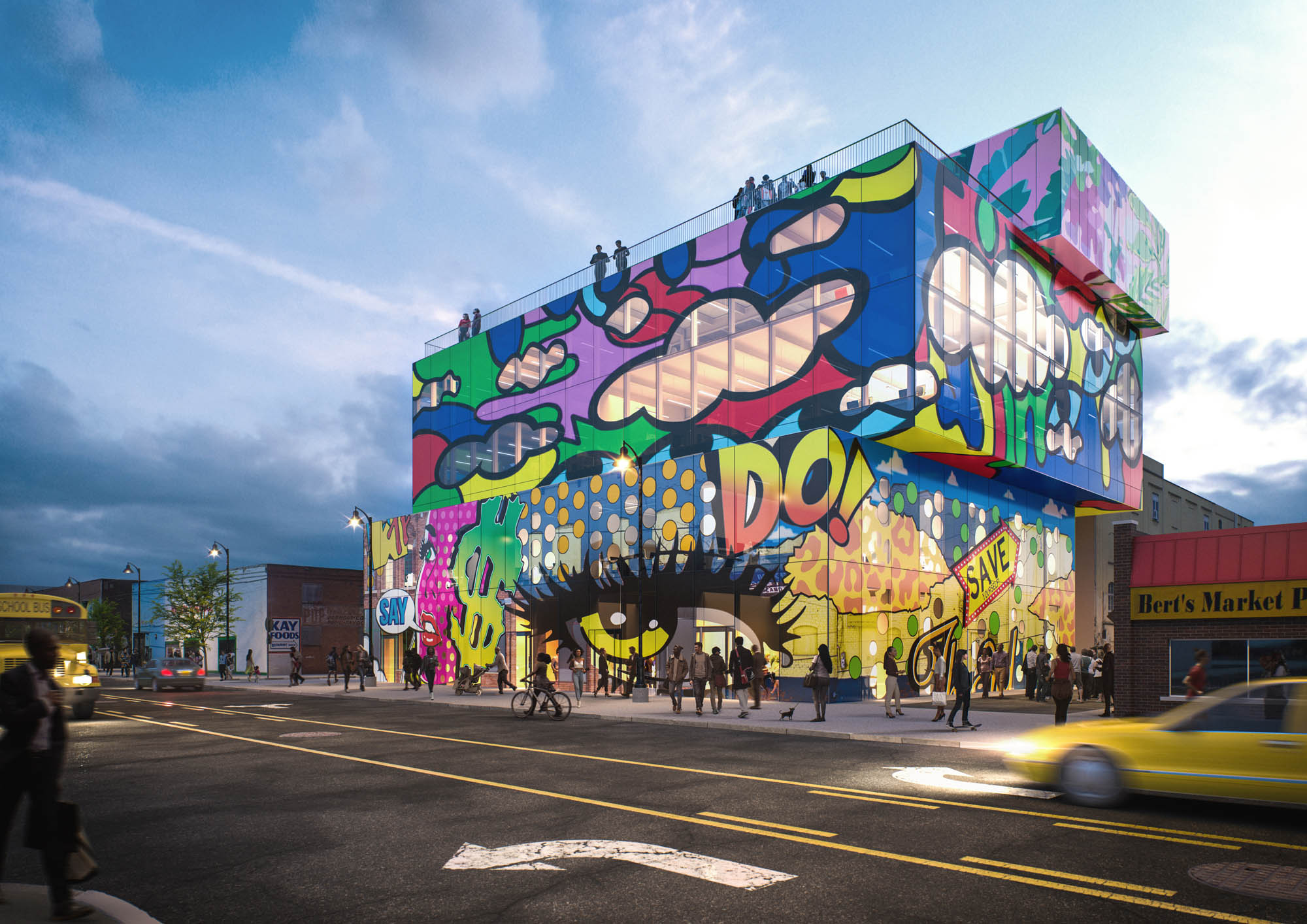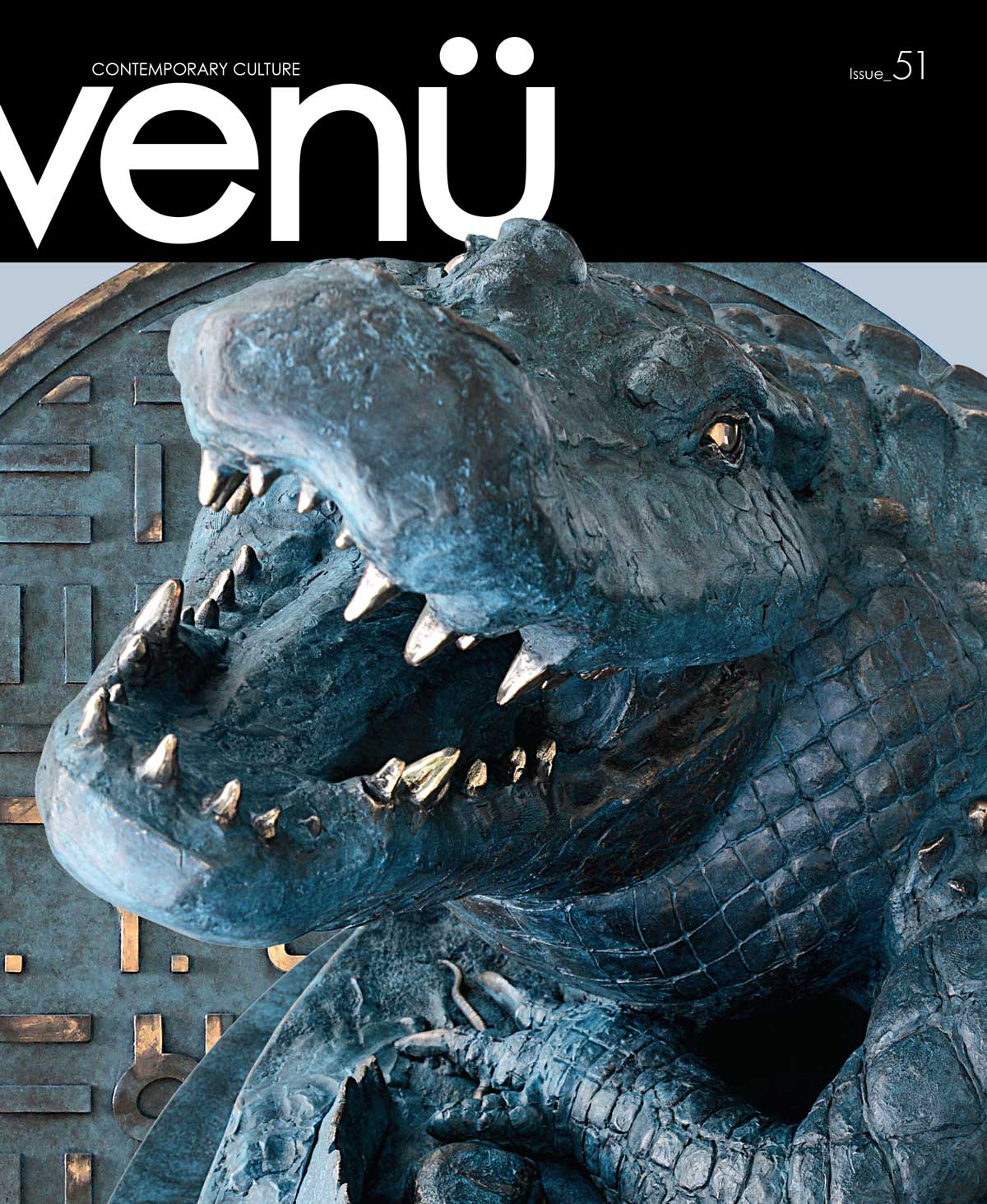
“The beauty of silver lining is that they don’t take away the rain. Rather, they provide an umbrella.” — Elizabeth Messina
Edwin Chan’s devotion to building a better future is an Art of Humanity. (Rénxìng de Yìshù) His interminable long-term commitment explores forward-looking notions to meet the responsibilities of the ever-changing challenges we face today in our cities and communities. “We are standing at a crossroads to develop new solutions for mixed-use developments, multi-family residential projects, the workspace, as well as the arts and cultural institutions,” implies Chan. With the topic of climate change and COVID in policy-making decisions that are frequently making headlines, “Architecture must look deeper than its immediate contexts.”
Jeffrey Maynard, Principal at Maynard Design + Interiors established in Newport Beach, confabs with Edwin about the past, present, joint efforts, and what the future holds in store for his Los Angeles-based architecture firm EC3.
JM: You worked with Frank Gehry for 25 years. How did that experience influence your work?
EC: Although FG and I share a similar interest in exploring the sculptural potential of architecture, the most invaluable lesson was the collaborative, hands-on design process. This intuitive and humanistic approach provides an altruistic value that I continue to carry out within my own practice at EC3.
JM: Have you developed new design philosophies since the inception of EC3 in 2012 or continued to build off the foundation of your time with Gehry?
EC: When I was at FG, I had the liberty to design many so-called stand-alone, iconic projects such as the Guggenheim Museum in Bilbao and the Fondation Louis Vuitton in Paris. When I founded EC3, I wanted to rekindle the relationship of architecture with landscape, social sciences, urbanism, and the arts. Architecture is the catalytic anecdote to building stronger communities. Our initial ground-up project, True North, has succeeded in doing that.
JM: Given your freedom of expression, how do you originate a new project? Is there a specific end goal in mind, or do you let the trajectory symbiotically evolve with the more profound understanding of the space?
EC: We do not start a project with a preconceived idea of what the project should be. I think of our design process as a “creative journey.” We let the project take shape and organically unfold to arrive at its own destination. There’s an old Chinese proverb that says, “When the wind of change blows, some build walls, while others build windmills.” I believe that each new challenge brings an opportunity for change that arouses fulfilling and exciting discoveries.
JM: How do you find the balance between functionality and esthetics?
EC: Beauty begins from the inside out, and we typically initiate our design process in the same manner. For example, when designing a museum, we always invite the curators and artists to mock up the exhibitions in our physical models to ensure that the galleries complement their artistic aspiration. The galleries in Bilbao were developed through this process to reflect Guggenheim’s director Thomas Krens vision, and similarly, the exhibition spaces at Fondation Louis Vuitton responded to the design brief of its Creative Directors Suzanne Page and Jean-Paul Claverie. My role as an architect is to give form to the dreams of these visionary cultural institutions through architectural expressions.
JM: How does art inspire your work, and is there a particular medium of art that you reference more frequently?
EC: Although I appreciate many different “periods” and “styles” from the Renaissance and Baroque to Minimalism and Abstract Expressionism, my passion stems from how the artistic disciplines can inform and inspire my own creative process. Recently, we’ve designed a “Year of the Dog” sculpture influenced by the Chinese Scholar Rocks. Nature has been a great source of inspiration for me, and I often look at artists who work with the natural or ephemeral phenomena like Olafur Eliasson or Pierre Huyghe.
JM: Why do you prefer hand sketching and physical models in the digital era of design and architecture?
EC: The making of the physical models is our way of sketching in 3-D. The models are more grounded and intuitive in understanding how the creative gesture should respond to the discipline of the physical world, such as materiality and gravity; hence, working with wood and cardboard ultimately keeps the design honest.
JM: Has integrating technology been a challenging learning curve, or has it been a relatively seamless process?
EC: It turns out that our hands-on design process of using physical models and iterative prototyping has been invaluable in working with our tech-company client to interphase with their state-of-the-art technologies. To develop the concept design for Green Loop, we constructed a full-scale mock-up at the client’s Mountain View campus to help the client’s team visualize the scale and aesthetics of our concept. The demonstration was successful in showing the seamless integration of their interactive technology “software” to meet the performance of the architectural “hardware” for the space.
JM: What was most impactful about the camaraderie of working with the technology firm for project Green Loop?
EC: The tech-company client was impressed by our approach to celebrate their humanistic values and creativity as a “Cultural Project”, rather than highlighting the technical ingenuity they’re known for.
JM: What is the approval process like when presenting such unique visions? Do you often get push back, and if so, how do you handle these situations?
EC: I’ve learned from experience that there’s no place for opacity. It’s easier to gain approval and acceptance when the creative process is more personalized, inclusive and transparent.
JM: How do you decide on finish materials? Is it based on local and sustainable products, or how a material reacts to environmental conditions?
EC: EC3’s architecture prioritizes spatial experience over surfaces with “fussy” finishes and details. We tend to choose materials based on how they respond to light. For example, different metals (stainless steel, titanium, aluminum, etc.) reflect the light and sky differently. Similarly, glass could be used in different transparencies to address a divergence of functional and privacy requirements. We also look at how artists transform the ordinary to turn into extraordinary artistic expressions. For the DESTE fashion exhibition at the Bass Museum in Miami, we developed the installation aesthetic by using hurricane shutters that we found in the local Home Depot. I called it “hurricane chic”; it became the most popular exhibition at the Bass in 2018.
JM: What are the most significant benefits when collaborating with other architects, designers, artists, and companies, on projects from beginning to end?
EC: The EC3 firm was founded on an ethos of cross-disciplinary principles to charrette with other designers, artists, engineers, and professionals. Over the years, we’ve been fortunate to have developed close working relationships with other practices to include Munich-based Transsolar for sustainability, New York and Paris-based L’Observatoire for lighting, as well as Detroit and Miami-based ABOVE THE FOLD for project and business strategies. They’ve become part of our creative ecosystem.
JM: How important is the tactile experience to you?
EC: At its core, I believe that architecture is an immersive and sensual experience that comes to life through the thoughtful choreography of materiality with the human scale to empower social interaction. The CHALET project used modular heavy timber elements integrated with site-specific art installations to create an intimate (and fun) experience -a Gesamtkunstwerk for the 21st Century.
“Beauty comes from abandoning the refuge of the old forms for the uncertainty of the present.” — Michelangelo Buonarroti
JM: Do you believe that the interiors of a space need to be in direct correlation with the exterior, or is that dependent on the type of space you are creating?
EC: Personally speaking, interior and exterior architecture should have a symbiotic relationship, but not in the modernist “form follows function” sense. Instead, exterior architecture should embody the aspirations and essence of the interior spaces. Our design process often involves studying and exploring the spatial relationships with color-coded massing blocks representing the various program elements. After we’ve arrived at an optimal organization for the program, we begin to consider the architectural articulations of the exterior. When it comes to developing the interiors of a space, we always try to incorporate natural light and views as crucial design concepts, like the series of interconnected “neighborhoods” oriented to San Francisco’s skyline views for a tech-company’s new workspace.
JM: When developing experiential spaces all across the globe do you find that most cultures view the work you do from a similar perspective, or do you have to run studies and acquire enough data to make sure your vision will be culturally acceptable?
EC: To design a project that responds to the geographic context does not mean copying the cursory architectural style of the place. I prefer to capture and express the ethos of a place by engrossing myself in the different cultures of its visual arts, literature, music, and food. For Orchard Park in Idaho, the state’s diverse ecosystems resonated with my passion for the natural environment. The sentiment behind reinventing the vernacular of the “Barn” as a “Crystal Palace” in modern-day was to showcase the products and brands integral to Idaho’s outdoor lifestyle.
JM: Do you anticipate a change in the way you interpret and develop public spaces during these unprecedented times?
EC: I think the pandemic has made everyone appreciate the importance of having better access to fresh air, natural light, and nature. These are values that we already prioritize in our design. For the Core City residential project (our second project in Detroit for the client Prince Concepts), we decided to abandon the conventional «double-loaded corridor» typology for multi-family developments in favor of giving each unit more exposure to communal green space. With Orchard Park, we’re collaborating with Transsolar to optimize natural ventilation and daylighting to encourage a synergetic flow between the indoor and outdoor environments.
“I hope that we will continue to develop and reinterpret design strategies with other projects to make our planet a better and more sustainable place to live, work, and play.”
— Edwin Chan
JM: Can we look towards more sustainable buildings as a worldwide standard in the future?
EC: In Sydney, Australia we were very fortunate to have a tech-company client committed to the same sustainable vision in creating a net-zero future. Consequently, we were able to work closely with our long-time partners -climate engineer Transsolar and structural engineer Eckersley O’Callaghan, to develop a unique design concept for the client’s headquarters tower. However, it remains to be seen whether commercial developers in the U.S. and worldwide would commit to the same vision and refrain from constructing ubiquitous glass towers that have dominated the skylines of cities worldwide. I’m optimistic that our concept will set a new precedent and benchmark for future developments to come.
JM: With the limited amount of resources and a growing population, how do you foresee architecture responding to help eradicate some of the damaging long-term effects that COVID has had on our environment?
EC: In order to address the topic of Climate Change, we think that architecture must go beyond the practice of “Green-washing” (such as LEED certification) to embrace a long-term commitment of reducing the carbon footprint of our built environment. This begins with the rethinking of how we construct buildings by using sustainable materials such as CLT (Cross-Laminated Timber) that could potentially reduce carbon emission by 50%. Then, we have to think about how to reduce operational costs and energy waste in the building’s lifecycle which could contribute to a 30% reduction of carbon emission. And finally, we should explore renewable energy (such as solar and wind power) that could constitute another 20% towards the net-zero goal.
JM: What do you want people to take away from your architecture?
EC: One of the most inspiring architectural moments for me is when I visited the Chapel of Ronchamp by the great Modernist architect Le Corbusier. The way he used light to sculpt the space has created a genuinely moving spiritual experience. I hope to achieve the same transcendence with my work someday. EC3 is dedicated in our role to enriching people’s lives by making architecture as “social sculpture” – forging strong communities that reflect our shared values both instinctively and culturally.
Are we ready to create new worlds in outer space, or are we committed to making more robust built environments that are deeply rooted in our planet? EC3’s universal mission is to venture into the next unknown, waiting to turn the next page out of their playbook.




Leave a Reply